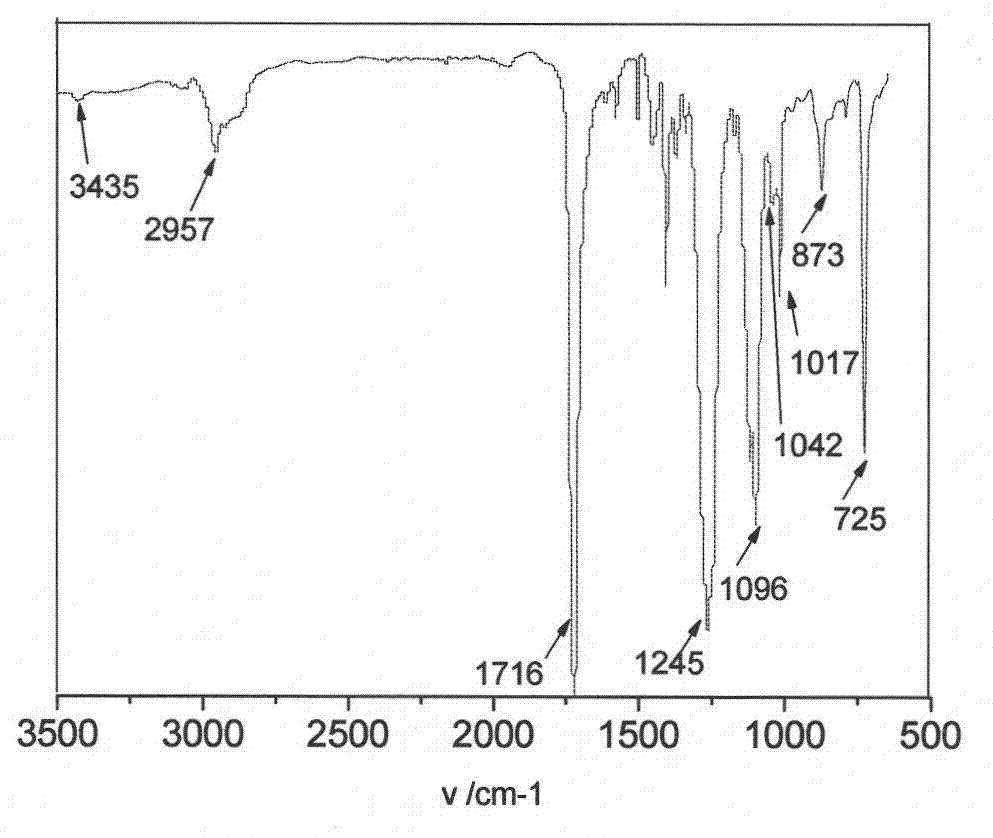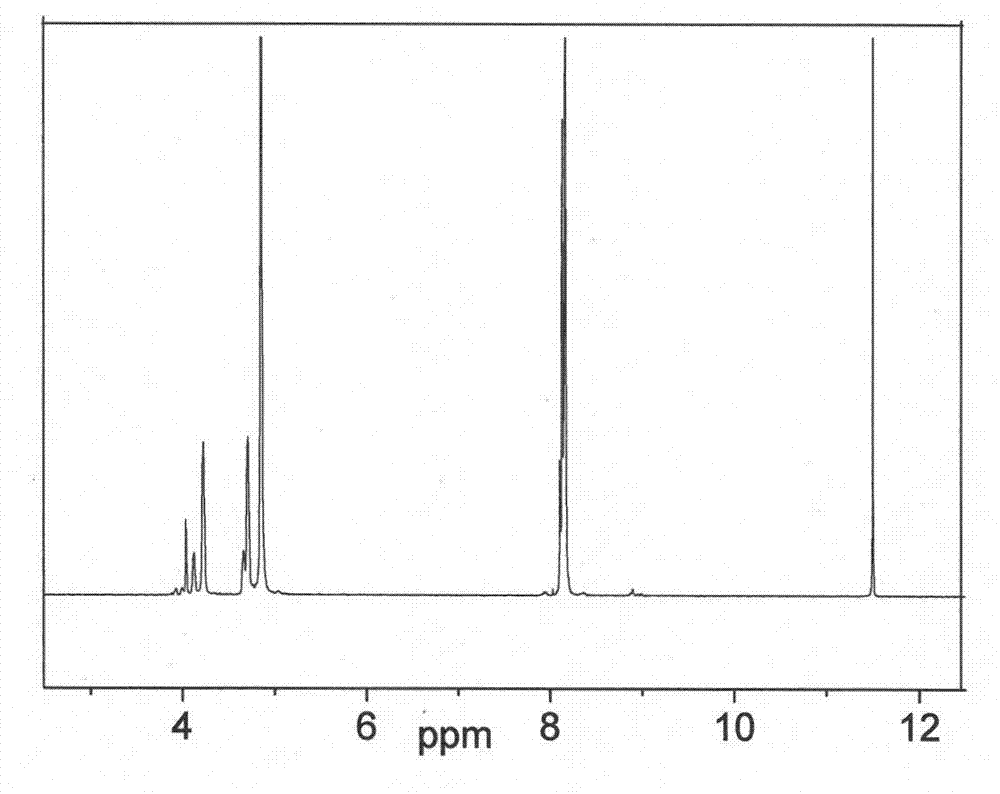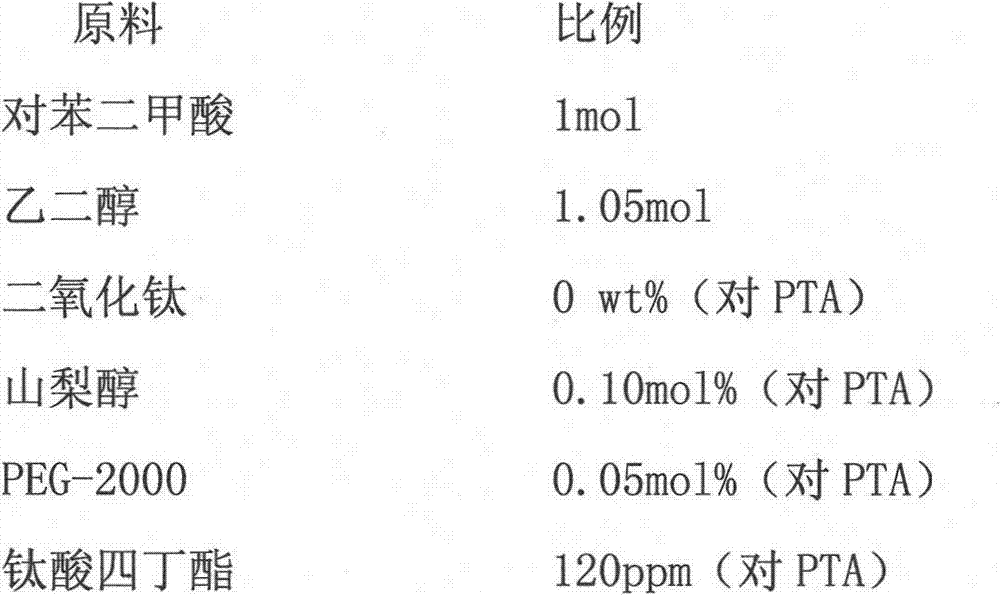Preparation method of antistatic hydrophilic polyester fiber
A polyester fiber, antistatic technology, applied in the field of preparation of antistatic hydrophilic polyester fiber, to achieve the effect of lowering the melting point, avoiding degradation, and good softness
- Summary
- Abstract
- Description
- Claims
- Application Information
AI Technical Summary
Problems solved by technology
Method used
Image
Examples
Embodiment 1
[0039] (1) The hydrophilic polyester chips are produced by a continuous polymerization process, and the formula is as follows:
[0040]
[0041] The terephthalic acid and ethylene glycol are mixed in proportion to prepare slurry. The prepared slurry is mixed with the catalyst tetrabutyl titanate and then added to the esterification reactor for the first esterification reaction. The first esterification reaction temperature is 225° C., the reaction time is 4 hours, and the relative pressure of the reaction is 0 MPa. The by-product water is separated and collected by a fractionation tower. The collected amount is measured by a graduated cylinder. The theoretical value is calculated according to the reaction formula. When the collected amount of water reaches 82% of the theoretical value, sorbitol and polyethylene glycol (PEG-2000) are added. ) Carry out the second esterification reaction, the second esterification reaction temperature is 240° C., the pressure is normal pressure, an...
Embodiment 2
[0047] (1) The hydrophilic polyester chips are produced by a continuous polymerization process, and the formula is as follows:
[0048]
[0049] First, ethylene glycol and titanium dioxide are mixed in proportion to be beaten, and then mixed with terephthalic acid in proportion to prepare slurry. The prepared slurry is mixed with ethylene glycol antimony, antioxidant 1010 and trimethyl phosphate in proportions and then added to the esterification reactor for the first esterification reaction. The first esterification reaction temperature is 250°C, and the reaction time is For 0.5h, the relative pressure of the reaction is 0.4MPa. The by-product water is separated and collected by a fractionation tower. The collected amount is measured with a graduated cylinder. The theoretical value is calculated according to the reaction formula. When the collected amount of water reaches 95% of the theoretical value, sorbitol and polyethylene glycol (PEG-4000 ) Carry out the second esterificat...
Embodiment 3
[0053] (1) The hydrophilic polyester chips are produced by a continuous polymerization process, and the formula is as follows:
[0054]
[0055] First, ethylene glycol and titanium dioxide are mixed in proportion to be beaten, and then mixed with terephthalic acid in proportion to prepare slurry. The prepared slurry is mixed with the mixture of antimony trioxide, antioxidant 168, and alkyl phosphoric acid diester in proportion and then added to the esterification reactor for the first esterification reaction. The first esterification reaction temperature is 230°C. The time is 2.5h, and the relative pressure of the reaction is 0.25MPa. The by-product water is separated and collected by a fractionation tower. The collected amount is measured by a graduated cylinder. The theoretical value is calculated according to the reaction formula. When the collected amount of water reaches 85% of the theoretical value, sorbitol and polyethylene glycol (PEG-6000 ) Carry out the second esterifi...
PUM
| Property | Measurement | Unit |
|---|---|---|
| electrical resistance | aaaaa | aaaaa |
| contact angle | aaaaa | aaaaa |
| Resonant frequency | aaaaa | aaaaa |
Abstract
Description
Claims
Application Information
 Login to View More
Login to View More - R&D
- Intellectual Property
- Life Sciences
- Materials
- Tech Scout
- Unparalleled Data Quality
- Higher Quality Content
- 60% Fewer Hallucinations
Browse by: Latest US Patents, China's latest patents, Technical Efficacy Thesaurus, Application Domain, Technology Topic, Popular Technical Reports.
© 2025 PatSnap. All rights reserved.Legal|Privacy policy|Modern Slavery Act Transparency Statement|Sitemap|About US| Contact US: help@patsnap.com



